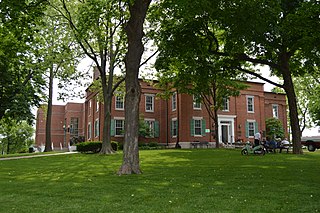
Monroe County is a county located in the U.S. state of Illinois. According to the 2020 census, it had a population of 34,962. Its county seat and largest city is Waterloo.
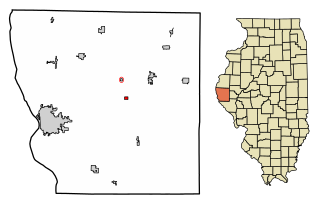
Columbus is a village in Adams County, Illinois, United States. The population was 114 at the 2020 census. It is part of the Quincy, IL–MO Micropolitan Statistical Area.

Raritan is a village in Henderson County, Illinois, United States. The population was 138 at the 2010 census. It is part of the Burlington, IA–IL Micropolitan Statistical Area.

Gorham is a village in Jackson County, Illinois, United States. The population was 236 at the 2010 census. It is known locally for its near-annihilation during the deadly Tri-State Tornado of 1925.

Fieldon is a village in Jersey County, Illinois, United States. As of the 2020 census, the village had a total population of 176. The village's current mayor is Julia Dixon.
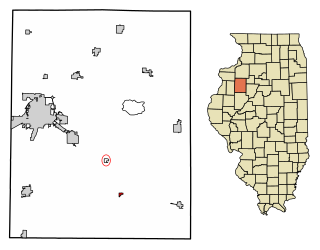
Maquon is a village in Knox County, Illinois, United States. The population was 218 at the 2020 census. It is part of the Galesburg Micropolitan Statistical Area.

Kangley is a village in LaSalle County, Illinois, United States. The population was 235 at the 2020 census, down from 251 at the 2010 census. It is part of the Ottawa Micropolitan Statistical Area. It is a part of the geographic region known as Streatorland.

Godfrey is a village in Madison County, Illinois, United States. The population was 17,825 at the 2020 census. Godfrey is located within the River Bend portion of the Greater St. Louis metropolitan area.
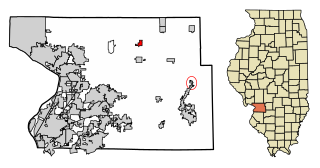
Worden is a village in Madison County, Illinois, United States. The population was 1,096 at the 2020 census.

Tennessee is a village in McDonough County, Illinois, United States. The population was 101 at the 2020 census.

Oakford is a village in Menard County, Illinois, United States. The population was 234 at the 2020 census, down from 286 in 2010. It is part of the Springfield, Illinois Metropolitan Statistical Area.
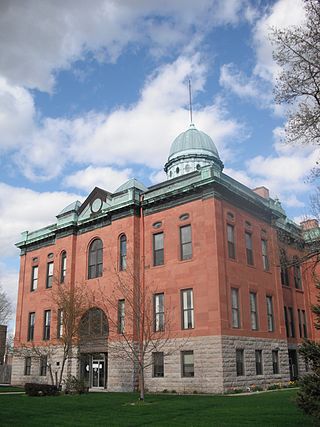
Petersburg is a city in and the county seat of Menard County, Illinois, United States, on the bluffs and part of the floodplain overlooking the Sangamon River. It is part of the Springfield, Illinois Metropolitan Statistical Area. The population was 2,258 at the 2020 census, nearly unchanged from 2010. Petersburg is located approximately 2 miles (3 km) north of New Salem, the original location where Abraham Lincoln first settled, as he started his career.

Hecker is a village in Monroe County in the U.S state of Illinois. The population was 429 at the 2020 census, down from 481 in 2010.

Valmeyer is a village in Monroe County, Illinois, on the Mississippi River. The population was 1,263 at the 2010 United States Census.
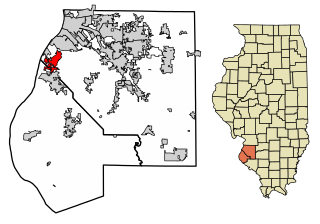
Dupo is a village in St. Clair County, Illinois, United States. The population was 4,138 at the 2010 census, an increase from 3,933 in 2000. The village was settled in about 1750 and was incorporated in 1876. Its name is derived from Common Fields of Prairie du Pont.

Sauget is a village in St. Clair County, Illinois, United States. It is part of Greater St. Louis. The population was 141 at the 2020 census, down from 159 in 2010.

Foster is a village in Bates County, Missouri, and is part of the Kansas City metropolitan area within the United States. The population was 76 at the 2020 census.

Old Monroe is a city in Lincoln County, Missouri, United States. The population was 265 at the 2010 census.

Pitsburg is a village in Monroe Township, Darke County, Ohio, United States. The population was 388 at the 2010 census.

Gilead Precinct is located in Calhoun County, Illinois. The population was 314 at the 2020 census, a decrease from 342 at the 2010 census.























